Bass Is Big. Bass is Good. Build me up.

Why would I build a transmission-line sub? Well, why not? Driver choice is a crucial design element in any speaker, and we lucked out. Audio technical editor Mark Peterson found a slightly dusty Seas 33 F-ZBX DD 13-inch woofer in his garage. The driver's actual diameter was just about 12 inches, and it had a free-air resonance of 23 hertz. It was also right in our price range (free).
Now, 23 Hz has a wavelength of just over 49 feet, so our enclosure would have to be 12.28 feet long to equal one-quarter of that wavelength. Because size (and aesthetics) wasn't an issue and we planned to cross over the sub at 80 Hz or lower, we could construct an enclosure at that length and ideally not have to line it with anything.
Ah yes, the glorious enclosure. Mark once built a transmission-line sub using two pieces of four-by-eight plywood and snaked the enclosure between them. I imagine this would require drilling and labor...and carpentry skills. So that was out. My next thought was PVC pipe: 20 feet of 12-inch-diameter PVC pipe (the only length I could find) costs about $150. Ouch. And that still required labor (cutting = bad).
What about Sonotube, you ask? Sonotube is the name brand for the long cardboard tubes that look like giant toilet-paper rolls. They're used as concrete pillar molds for foundations or Flintstone car wheels. Cardboard is self-dampening, quite rigid for its size, and (best of all) cheap. Local Sonotube seller White Cap had 12-foot lengths for $43.77. I bought an additional 4-foot length from Home Depot (the longest length they had) and glue for $13.72. I sliced this extra tube into a 6-inch coupler and two smaller pieces to make an airtight seal between the driver, coupler, and line. I then fit the coupler over the main length of tube and glued it into place using polyurethane adhesive (see Figure 4). The total interior tube length was just inches shy of our goal of 12.28 feet.
I hooked up a Sunfire Cinema Seven Signature amplifier, which supplied more than ample power. After squeezing the now-12.5-foot-long sub into our listening room, I put in our Burmester test CD, turned up the volume, and pressed play.
At this point, I wish I could say that I said something clever like, "It's alive!" or even, "It blinded me with science!" However, I admit that what I said was closer to, "Holy crap, it actually works!" Indeed it did…and surprisingly well. I can definitively say that it's the best sounding $57 subwoofer I've ever heard.
As with any sub, placement was crucial. Running lengthwise in our room (with one end in the corner) and crossed over at 80 Hz, our transmission-line sub wasn't very articulate and sounded quite top-heavy. Reducing the crossover to 50 or 60 Hz alleviated much of the heaviness. We then rotated it 90 degrees and placed each end in our room's ideal sub locations. Now the sub was broadside in the room, with just a few inches to spare on either side, and created quite a tripping hazard, but this placement tightened up the sound and made it far more musical. Now it was actually a sub that I wouldn't mind using in my house. With more time and experimentation, this could be quite an impressive sub. I already have a few ideas on how to improve it (like a bit of EQ), but those will just have to wait for another issue.
Building a transmission-line sub was certainly an interesting experiment. Will it replace a well-designed store-bought sub? Almost certainly not. But it's hard to beat if you enjoy scavenging for parts and building things. A driver will run you an average of $100. Amp costs can vary from the $5 yard-sale receiver that powered my first homemade sub to the overkill $4,000 Sunfire we used here. If you do plan to dabble in the world of transmission-line subs, please, warn your loved ones-and clear out a large space in your listening room.
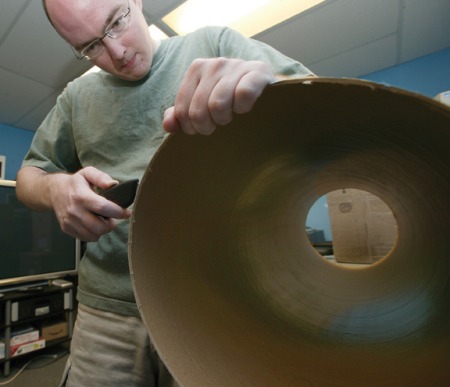
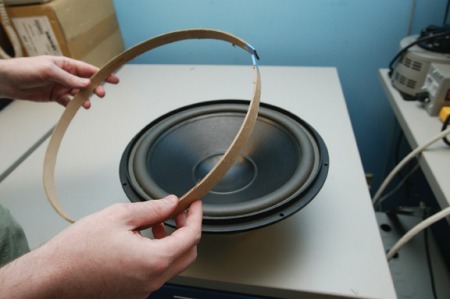
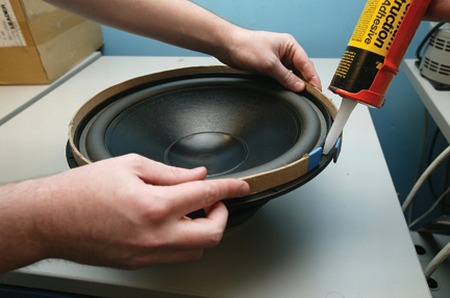
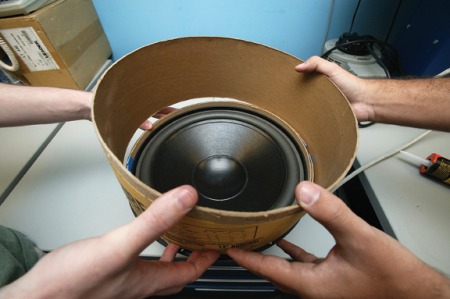


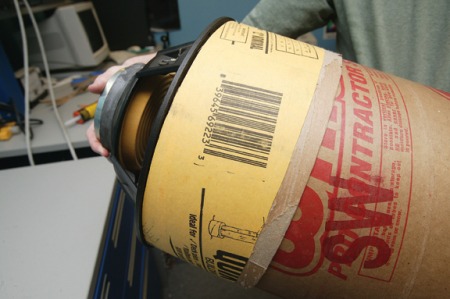
- Log in or register to post comments































































